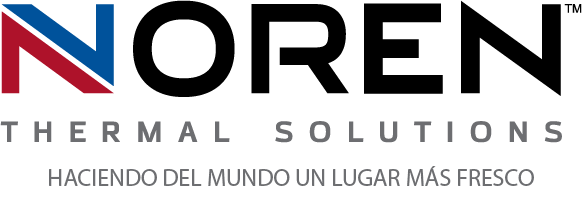 When it comes to getting the most out of your technological applications, an understanding of their thermal management needs is a must. Indeed, some devices serve general purposes in indoor settings, such as factories or warehouses, whereas others are highly specialized for a specific field or industry. Regardless, each one is unique and requires a certain level of care and maintenance to ensure a consistent and safe working environment. In today’s blog, the team at Noren Thermal Solutions in Taylor, TX explains how air to water heat exchangers utilize natural methods to provide effective application cooling, and how your business can benefit from this process.
When it comes to getting the most out of your technological applications, an understanding of their thermal management needs is a must. Indeed, some devices serve general purposes in indoor settings, such as factories or warehouses, whereas others are highly specialized for a specific field or industry. Regardless, each one is unique and requires a certain level of care and maintenance to ensure a consistent and safe working environment. In today’s blog, the team at Noren Thermal Solutions in Taylor, TX explains how air to water heat exchangers utilize natural methods to provide effective application cooling, and how your business can benefit from this process.
Understanding Technologies
It goes without saying that there are a variety of methods used to accomplish internal temperature regulation within an industrial application. Indeed, this process is essential to proper function, as, without it, there will be no means for the waste heat that is produced to escape. What’s more? Without an outlet, waste heat will continue to build and contribute to rising internal application temperatures. When this occurs, you could experience a range of circumstances from overheating devices to total shutdown and permanent damage.
Indeed, there are a variety of methods that target specific aspects, including achieving optimal function, environmental sustainability, or even both. At Noren, our team places an equal emphasis on both aspects, as we believe that not only does quality not need to suffer to achieve environmental-friendly solutions but that you can get the most out of devices without damaging the working environment either. To learn more about this process, reach out to our team today.
Keeping Function in Mind
When utilizing air to water heat exchanger, it benefits you significantly to have an understanding of the process involved with phase-change technology. Indeed, this process utilizes a natural fluid such as water as a medium through which waste heat is absorbed and, subsequently, transferred away from the source.
The process exposes the fluid to the source where heat is transferred to the fluid. During this step, the fluid will begin to increase in temperature until it has met its latent point of vaporization, at which it transforms into a vapor. The vapor is then carried across a distance to cool. Once it has fallen below its vaporization point, it transforms back into a liquid and returns to the source to repeat the process.
Maintenance and Upkeep
In addition to utilizing natural methods in air to water heat exchangers, upkeep and maintenance are simple as well as minimal. Indeed, we believe that sometimes the simplest methods can be the most effective, and our products are a testament to that.
Learn More Today
Contact Noren Thermal Solutions in Taylor, TX by calling 512-595-5700 to learn more about the ins and outs of an air to water heat exchanger and speak with our team to get started today.







